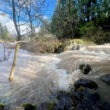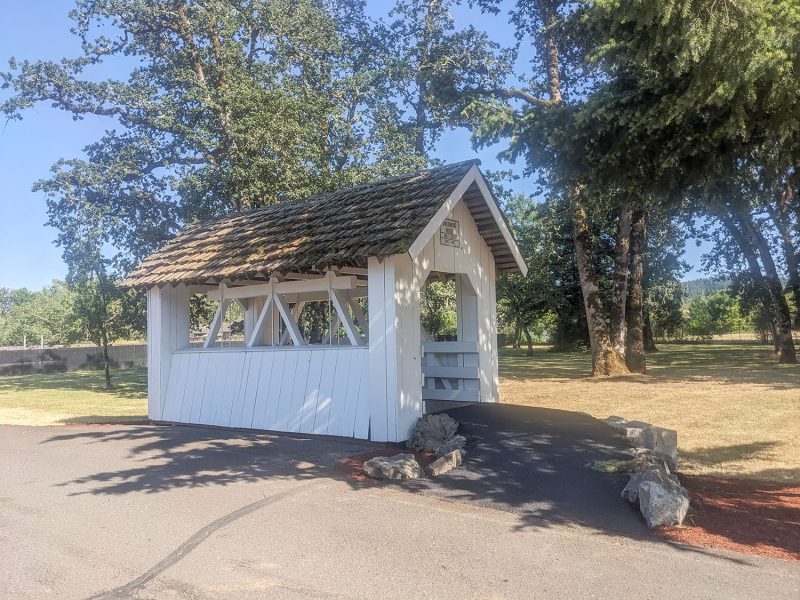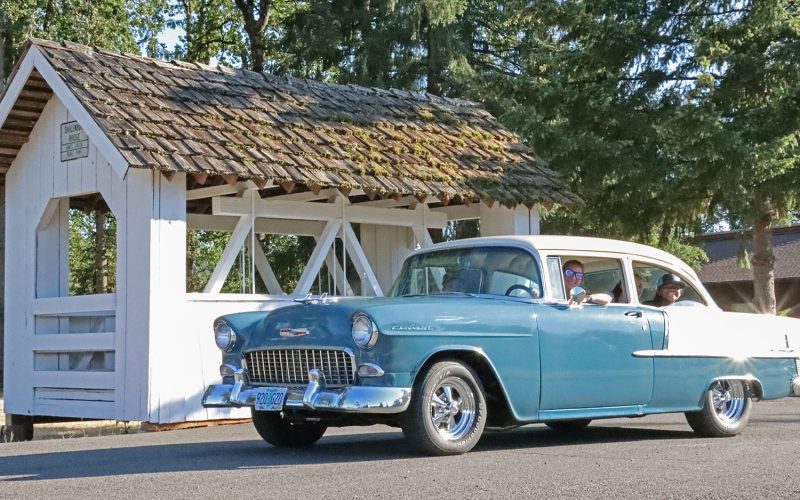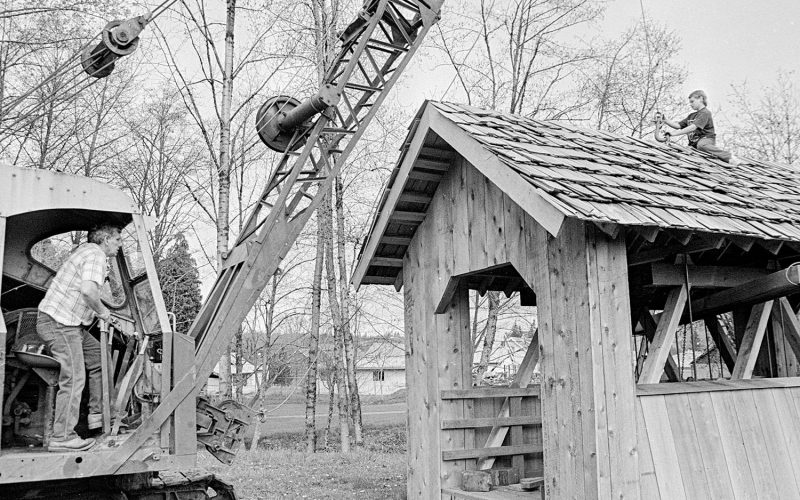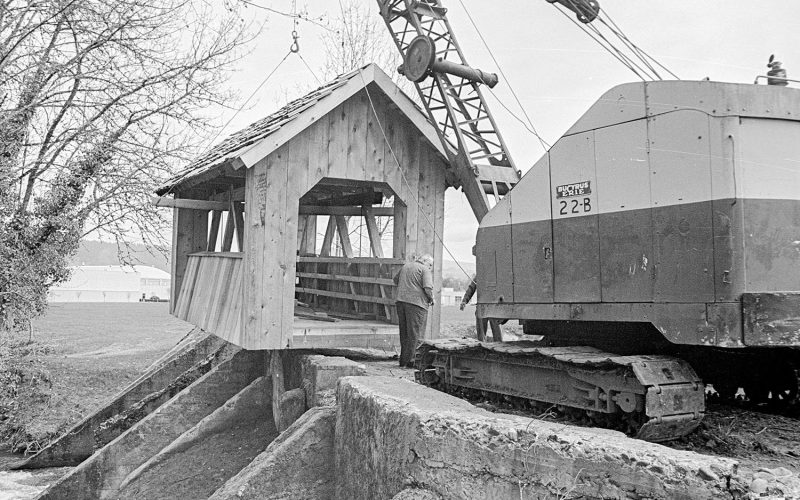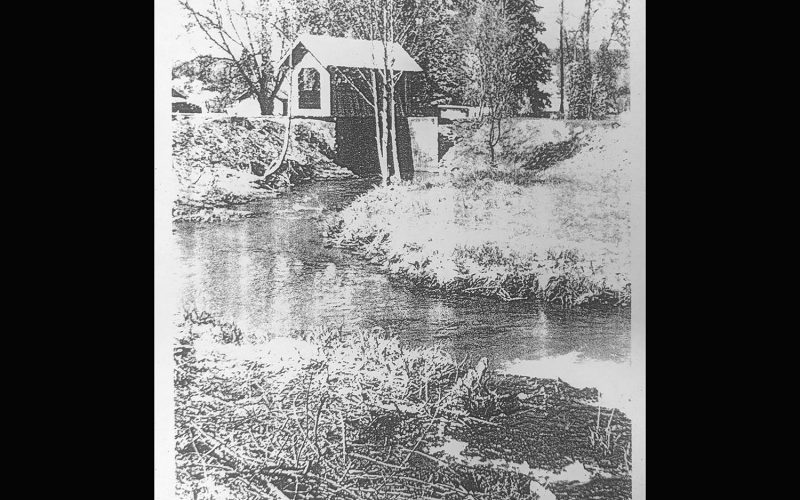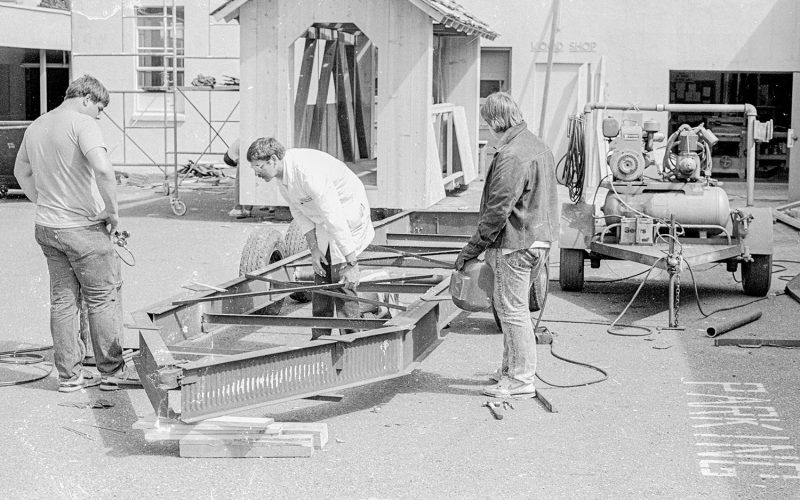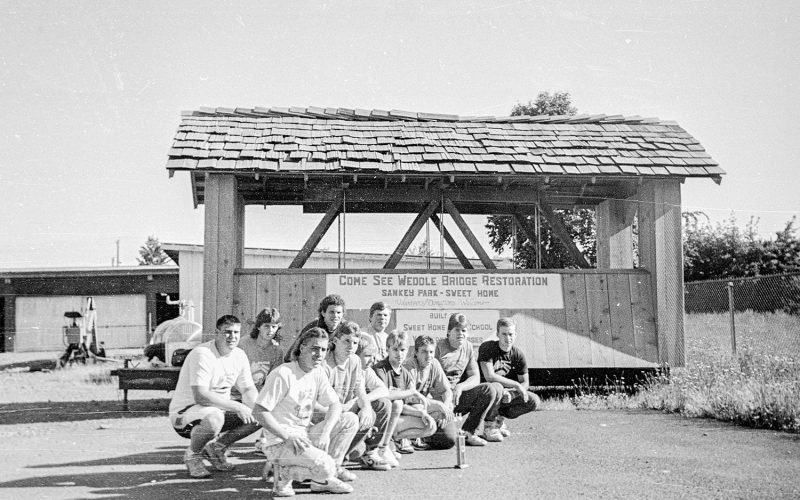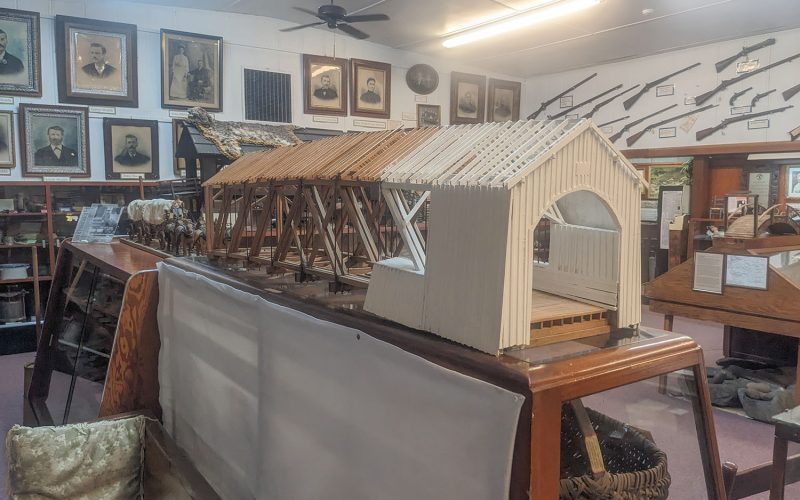The “miniature” version of Weddle Bridge has finally found its new home at City Hall after a team of volunteers successfully moved it from Sankey Park on July 2.
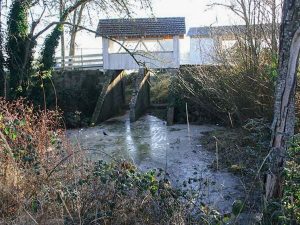
The city’s Public Works director in 2016 wanted to see the bridge moved out of Sankey Park because it was being vandalized. Even after it had been sealed off, people continued to rip out the barrier (oftentimes just chicken-wire style fencing), thus damaging the wood. They would put their cigarette butts out on the wood and vandalize the bridge with graffiti.
Now, some eight years later, the dream to relocate the bridge has been realized, thanks in part to the Park and Tree Committee which was eager to use the bridge as a backdrop for this year’s Cut the Gut. Thanks also goes to volunteers from Cascade Timber Consulting, Pacific Power, the Sweet Home Police Department, the Sweet Home School District and Timber Harvesting Inc. for moving the bridge, and the Public Works team for repairs.
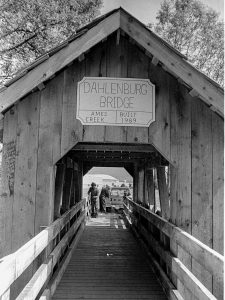
According to city staff, the Public Works crew sanded off graffiti, replaced rotten boards, cleaned and replaced roof shingles, painted the bridge and added a walkway.
The bridge was named after Ben Dahlenburg, a high school construction trades teacher who was among those to lead the effort to reconstruct the 120-foot Weddle Bridge. Dahlenburg explained the small bridge was a practice run built by his class in 1989 for the larger Weddle Bridge work.
The 20-foot Howe truss bridge is listed in the National Registry of Covered Bridges. It once allowed pedestrians to cross a pond at Ames Creek before the pond was removed in 2003. After that point, the bridge simply stood beside the creek as a lookout point.
Now Dahlenburg Bridge sits next to what is expected to be an official public park next to City Hall, and is fitted with a boulder and asphalt walkway for visitors to enter the bridge.
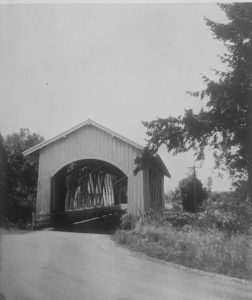
The original Weddle Bridge was built in 1937, crossing Thomas Creek west of Scio and proving itself useful for five decades until broken cords and dry rot forced the county commissioners’ resolve to tear down the hazardous structure in 1987.
Two years later, a passionate group of local bridge admirers rebuilt the bridge over Ames Creek at Sankey Park using salvaged wood from the original framework. Part of the fundraising efforts for the rebuild included yet another mini version of the bridge; it’s something of a mini version of the mini version (just slightly smaller than the Dahlenburg bridge).
Constructed, yet again, by Dahlenburg’s class in 1989, it was used in parades to solicit donations for the Weddle Bridge. That model was eventually sold to someone who lived on the other side of the states, but after some years of him not relocating the bridge to his state, he agreed to donate the bridge to the city in exchange for naming it after him. Now “Whittemore Bridge” sits at Clover Park.
If three versions of a bridge doesn’t satiate an aficionado of covered bridges, Sweet Home has a fourth version on display at East Linn Museum. The five-foot scale model – apparently also built by Dahlenburg’s class in preparation for the Weddle project – reveals mostly the framework of the bridge. Without the siding or covered roof, the model resembles a bare Weddle Bridge near Scio as its dismantling began in 1987.




